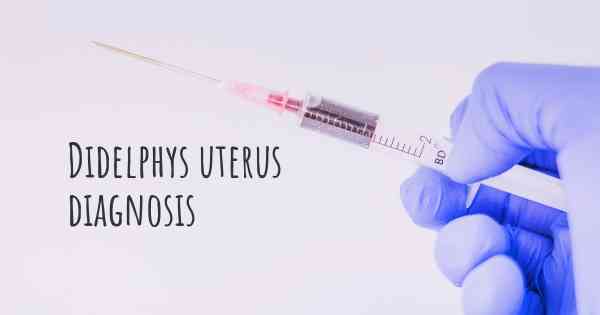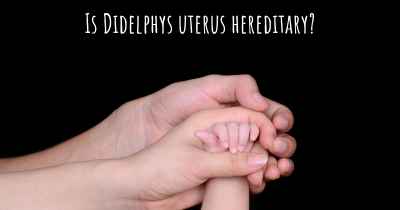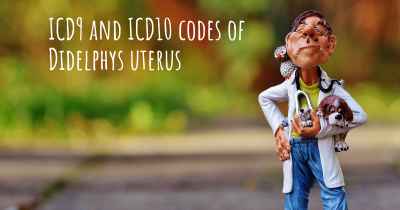How is Didelphys uterus diagnosed?
See how Didelphys uterus is diagnosed. Which specialists are essential to meet, what tests are needed and other useful information for the diagnosis of Didelphys uterus

Diagnosis of Didelphys Uterus
Didelphys uterus, also known as uterus didelphys or double uterus, is a rare congenital abnormality where a woman is born with two separate uteri, each with its own cervix and sometimes a double vagina. This condition occurs during embryonic development when the Müllerian ducts, which normally fuse to form a single uterus, fail to merge completely. Didelphys uterus is often asymptomatic, but it can lead to various reproductive and gynecological issues. Diagnosis of this condition is crucial for appropriate management and treatment.
Medical History and Physical Examination
The first step in diagnosing didelphys uterus involves taking a detailed medical history and conducting a thorough physical examination. The healthcare provider will inquire about the patient's menstrual history, reproductive health, and any symptoms or concerns related to the reproductive system. During the physical examination, the healthcare provider will perform a pelvic exam to assess the anatomy of the reproductive organs. They may use a speculum to visualize the cervix and vagina, and palpate the uterus to check for any abnormalities.
Imaging Techniques
Imaging techniques play a crucial role in confirming the diagnosis of didelphys uterus. The following imaging modalities are commonly used:
- Ultrasound: Transabdominal or transvaginal ultrasound is often the initial imaging modality used to evaluate the uterus. It can provide detailed images of the uterus, cervix, and vagina, allowing the healthcare provider to identify the presence of two separate uteri. Ultrasound can also help assess the size, shape, and position of each uterus, as well as detect any associated abnormalities such as uterine septum or vaginal septum.
- Magnetic Resonance Imaging (MRI): In cases where ultrasound findings are inconclusive or further clarification is needed, MRI can be performed. MRI provides highly detailed images of the pelvic organs, allowing for a more accurate assessment of the uterine anatomy. It can help differentiate between a didelphys uterus and other Müllerian duct anomalies, such as bicornuate uterus or septate uterus.
Hysterosalpingography
Hysterosalpingography, also known as uterosalpingography, is a specialized imaging procedure that involves injecting a contrast dye into the uterus and fallopian tubes. This procedure is primarily used to evaluate the fallopian tubes for any blockages or abnormalities. In the case of didelphys uterus, hysterosalpingography can help visualize the two separate uteri and their respective cervixes. However, it may not provide as detailed information about the uterine anatomy as ultrasound or MRI.
Other Diagnostic Procedures
In some cases, additional diagnostic procedures may be necessary to confirm the diagnosis of didelphys uterus or rule out other conditions. These procedures may include:
- Hysteroscopy: This minimally invasive procedure involves inserting a thin, lighted tube (hysteroscope) through the vagina and cervix to visualize the inside of the uterus. Hysteroscopy can help identify any abnormalities in the uterine cavity, such as a uterine septum or vaginal septum, which may be associated with didelphys uterus.
- Genetic Testing: In some cases, genetic testing may be recommended to identify any underlying genetic abnormalities that may be associated with didelphys uterus. This can help determine if the condition is part of a larger syndrome or if there are any associated genetic risks.
Conclusion
Diagnosing didelphys uterus involves a combination of medical history, physical examination, and various imaging techniques. Ultrasound and MRI are the primary imaging modalities used to confirm the presence of two separate uteri and assess their anatomy. Hysterosalpingography and hysteroscopy may also be utilized to provide additional information. Genetic testing may be considered in certain cases to identify any underlying genetic abnormalities. Early diagnosis of didelphys uterus is essential for appropriate management and treatment, especially for women experiencing reproductive or gynecological issues.








